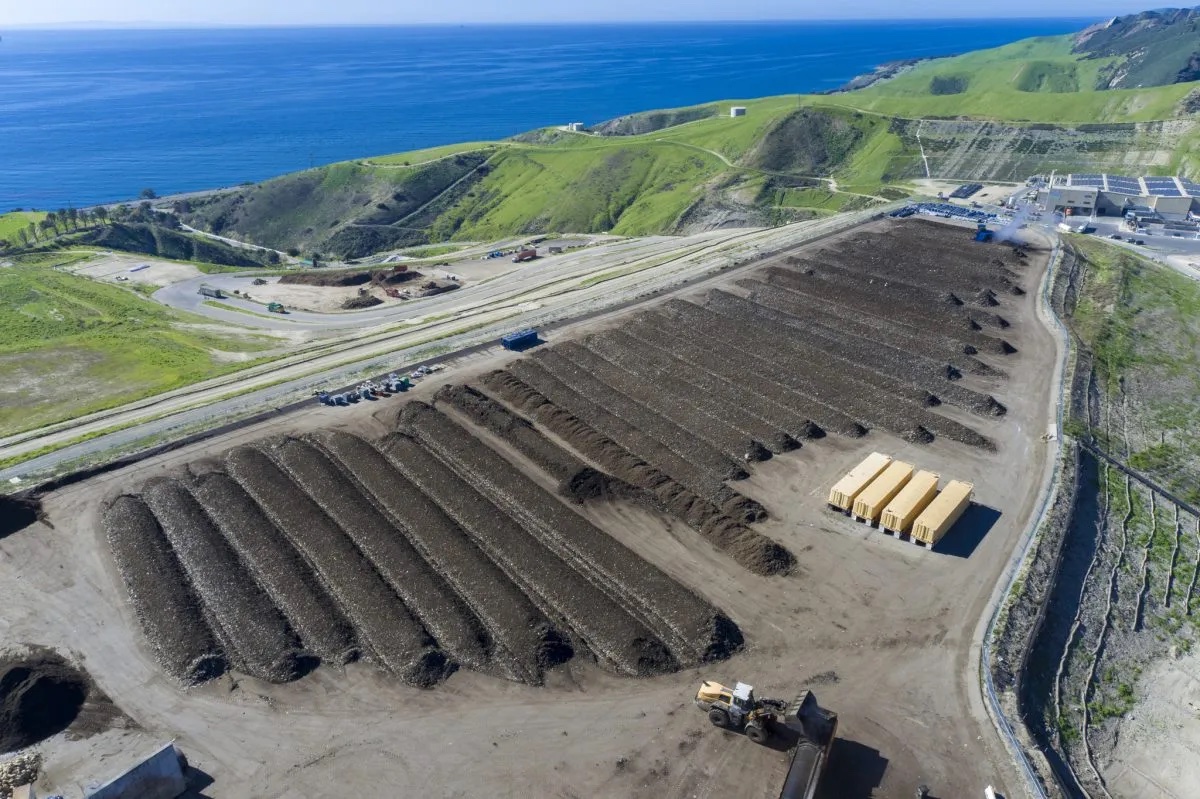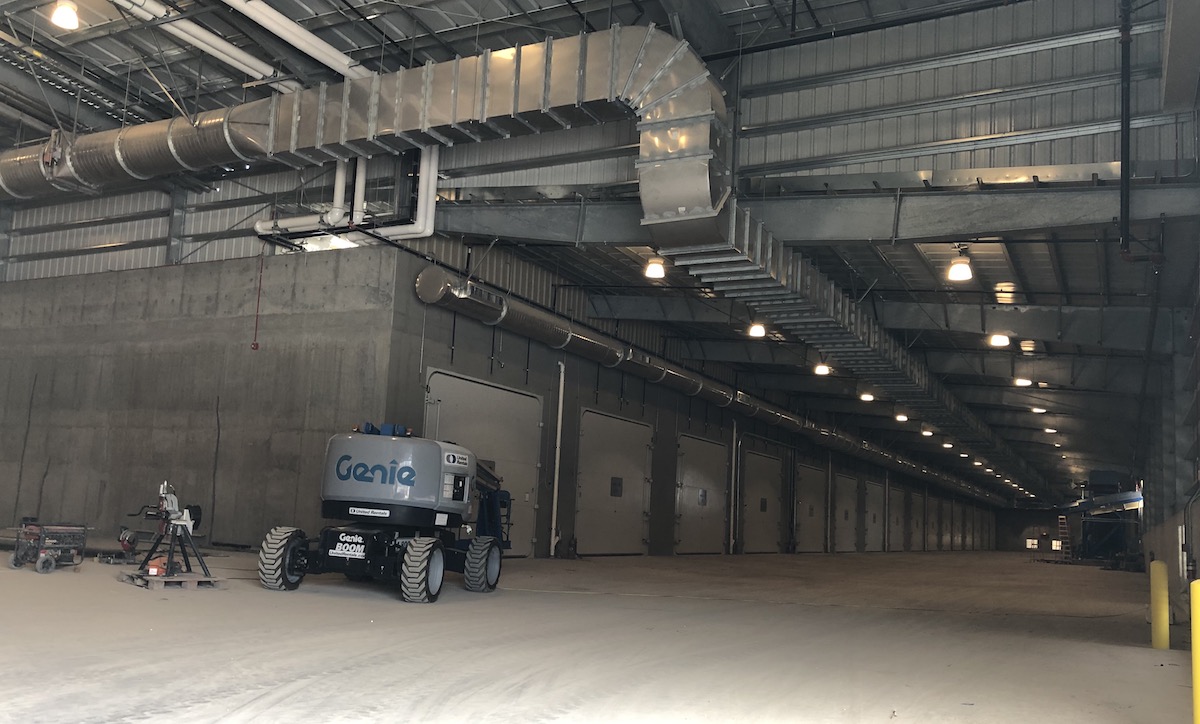Tajiguas Landfill Still Stinking Up a Gaviota Neighborhood
Santa Barbara County Seeks to Terminate Operator and Hire a New Contractor

Compost itself emits the smell of earth, but before organic matter reaches the compost stage, it can be pretty pungent. The residents of Arroyo Quemado learned this to their great dismay after the County of Santa Barbara installed new facilities at the top of their canyon to transform organic waste into compost on an industrial scale.
Some of the residents at the small Gaviota beach community describe the odor as akin to a feedlot; others feel tortured by the sudden stench drifting in during the night. The horrible smell permeates their hair, their skin, and their clothes; one person keeps their work clothes in sealed plastic bags and changes once outside Arroyo Quemado.
Since 2022, the residents — most part-time but a few full-time — have persistently told the county it has a duty to make the smell go away. In response, County Public Works will ask the Board of Supervisors to terminate the current operator — Mustang Renewable Power Ventures, a k a MSB Investors LLC — and hire a new operator for the anaerobic digester and the composting facility at a hearing on December 12.
The neighbors aren’t the only ones telling the county something must be done. The state agency CalRecycle, County Public Health, and the Regional Water Quality Board contacted Mustang and the county, said Carlyle Johnston, part of the Public Works team that developed the new Tajiguas facilities and who has been tasked since April with finding a solution to the smell. Notices of violation were issued, and the agencies’ stated steps were not being taken quickly enough — to which Johnston agreed.
“County staff didn’t feel the drainage aspect of the compost management was being done in a timely manner or properly,” he said. The issue arose after January’s heavy rains, and the county took over in an attempt to solve the problem quickly. Mustang did daily air tests that found no pollution, though Johnston noted that a bad odor and pollution had different qualifiers. A contractor was hired to manage the composting — which includes mixing digested organics with chipped green waste — and another to address odors.
This was all equally frustrating to the county, said Johnston, which spent $124 million building monolithic recycling and anaerobic digesting facilities that were completed in 2021. Mustang has been part of the facility since the beginning, first involved in seeking private financing for the upgrades. Those deals fell through when the interest rate turned out to be in the 10-15 percent range, and the county opted for public bonds with a 3-4 percent rate, Johnston explained.

Not all is a loss at the facility. Greenhouse gases are reduced through the methane-powered electricity generator, and the Materials Recovery Facility, or MRF, is pulling 60-80 percent of the organics from the trash and recycling bins. However, the anaerobic digester — where bacteria digest the organics into methane gas and a liquid digestate — hasn’t been able to use all the organic waste the MRF produces, Johnston said. Rather than a limit of 20 percent the county had anticipated going into the landfill, as much as 60 percent of the compost has been plowed under because the machinery fails so often.
Another logjam occurs at the screens and the densimetric tables, two sets of vibrating platforms that jiggle the lighter materials from harder ones, such as rock and glass, that don’t decompose. “The screens and tables break down, and this creates constant bottlenecks on-site,” Johnston said. “We haven’t hit the target diversion rate we wanted. And way more waste is being generated in the county.”
Public Works hired a consultant to give a third-party evaluation of the digester and the composting operations. Those reports have led to the December 12 hearing. One company the county is considering is Bekon Energy Technologies, a Germany-based group out of Oxnard that’s experienced in running biogas plants. Another is MarBorg, which currently runs the ReSource Center, where recyclables and organics are separated.
Mustang did not return messages asking for comment regarding the county’s contentions.
To examine solutions, Johnston said he’d been to Gilroy to see how a highly rated facility made its compost. One solution he found at San Diego’s Miramar Landfill was an electric-powered covering system that the county hopes to complete installing by January.
“I lay on top of the compost pile with the cover on it; I sat on it. It didn’t smell. It works,” Johnston promised.
Manufacturing tarps to go over the rows of compost might knock down the smell, but what about when the rows were rotated? asked Bruce Hendricks, a resident at Arroyo Quemado. “The problem is, when you turn over the rows, you have to take the tarps off to do that. I think it’s a Band-Aid, but that seems to be their only solution at the moment.”
Hendricks was skeptical that the county would succeed as they clearly hadn’t done their research at the outset, at a great waste of taxpayer money, he said: “We can do better.”
[Update: Dec. 7, 2023, 4 p.m.] Hendricks is joined in his skepticism by Paul Relis, with whom we spoke after the early version of this story appeared. In the 1990s, Relis was an environmental member on the state’s Integrated Waste Management Board, which is now called CalRecycle, and was the first executive director of Santa Barbara’s Community Environmental Council. When the county began discussing the new facilities at Tajiguas around 2007, he was among the number who doubted that the county’s new facilities would meet new state rules to keep 50 percent of trash out of the landfill.
It seemed overly optimistic to pull that off with a “dirty” composting facility, Relis said, especially with a company new to the field. Most facilities used only food waste or green waste like lawn clippings to make high-end compost, which can be used in agricultural fields.
“The concept we criticized was ‘garbage in, garbage out,'” Relis said. “Separating trash to make quality compost has been tried over and over again, and most of those projects failed.” In Germany, where anaerobic digesters use trash to make compost, the low-end material is most often used to cover the day’s trash at the landfill, he said.
At Bekon, Philippe Laurencelle explained that the issue was heavy-metal contamination from batteries. “During the anaerobic digestion process, any batteries would begin to corrode from the degradation process. The batteries would break down and leak heavy metals. That’s where the problem is. You can make compost, but it won’t be compost you can use for gardening or growing food.”
Johnston agreed, saying Tajiguas’s compost could not be used for row crops or organic crops, but an avocado orchard took the first 10,000 tons they generated. About six farms take compost now, which can be used for county crops such as citrus, grapes, and cannabis. Tajiguas compost was tested regularly, and heavy metals have not been found. “We screen for batteries, and we definitely find them in the MRF,” he said. (Used batteries can be put in a clear plastic bag on top of home trash bins on any pickup day to help keep them out of the waste stream.) As well, the landfill achieves a 50 percent diversion rate with the new MRF, he said, and has reached 80 percent at times.
The facility opened in July 2021, and Relis thought it could take as long as five years to work all the bugs out. As for the smell, he sounded optimistic for the first time during the conversation at the mention of the Gore cover. “If they did that, that would be a remedy,” he said. “That’s not a cheap system and is a major new cost, but it has pipes all through it to treat the air. That should work.”
As for the need to turn the compost rows, Johnston said the Gore cover enabled them to leave the compost lie in the windrows, no turning.
Correction: The neighborhood downwind of Tajiguas Landfill is at Arroyo Quemado. An area called Arroyo Quemada is farther to the east.

You must be logged in to post a comment.